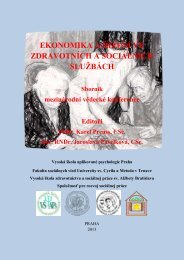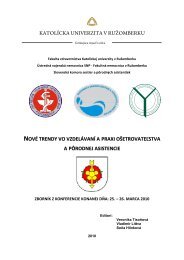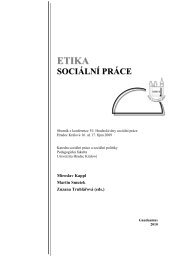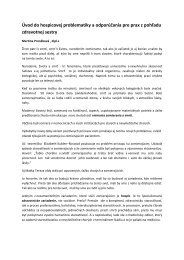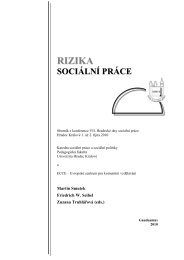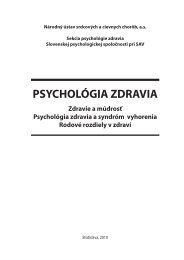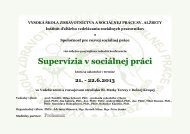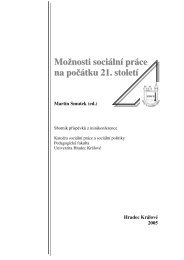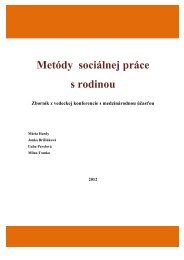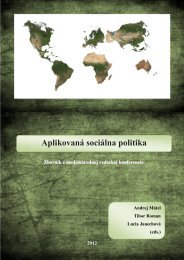Zmena klÃmy â možný dopad (nielen) na obyvateľstvo - Prohuman
Zmena klÃmy â možný dopad (nielen) na obyvateľstvo - Prohuman
Zmena klÃmy â možný dopad (nielen) na obyvateľstvo - Prohuman
Create successful ePaper yourself
Turn your PDF publications into a flip-book with our unique Google optimized e-Paper software.
Poor education also reduces individual and community receptivity to many<br />
forms of modern knowledge, and this likely includes the means of transmission<br />
and prevention of HIV, especially where this knowledge clashes with “common-sense”<br />
cultural beliefs transmitted by respected individuals or groups. In<br />
turn, poor education and the resultant privileging of traditio<strong>na</strong>l beliefs slow the<br />
dissemi<strong>na</strong>tion of new ideas and values, thus ensuring that older beliefs are transmitted<br />
to future generations. While in many cases reverence for ancient beliefs<br />
and values is socially protective, this is not always so. Some ancient beliefs can<br />
help to perpetuate cycles of poverty, disease and discrimi<strong>na</strong>tion, including against<br />
women and girls.<br />
CONCLUSION<br />
Establishing linkages between HIV and AIDS in its maturity stage and the Environment<br />
is a new research area. There is surely that much of the communities and<br />
families are doing in trying to cope with the epidemic, including increased use of<br />
herbal remedies. More needs to be done to try and document best practices on<br />
the linkages between the two. In the biodiversity conservation sphere, there is<br />
too much emphasis on preservation and protection compared to promotion of<br />
benefits to communities involved in the conservation initiatives. There is need<br />
to balance the act to allow the surrounding communities have visible short and<br />
medium term benefits.<br />
REFERENCES<br />
Gommes R, Guerny Jd, Glantz MH, Hsu L-N, J. White. Climate and HIV/AIDS:<br />
a hotspots a<strong>na</strong>lysis for early warning rapid response systems. Bangkok: UNDP,<br />
NCAR and FAO 2004.<br />
Rahmstorf S, Caze<strong>na</strong>ve A, Church JA, Hansen JE, Keeling RF, Parker DE, et al.<br />
Recent climate observations compared to projections. Science. 2007; 316: 709.<br />
McMichael AJ, McKee M, Shkolnikov V, Valkonen T. Global trends in life expectancy:<br />
convergence, divergence – or local setbacks? The Lancet. 2004; 363:<br />
1155–9.<br />
MacKellar L. Priorities in global assistance for health, AIDS, and population.<br />
Population and Development Review. 2005; 31(2): 293–312.<br />
60




